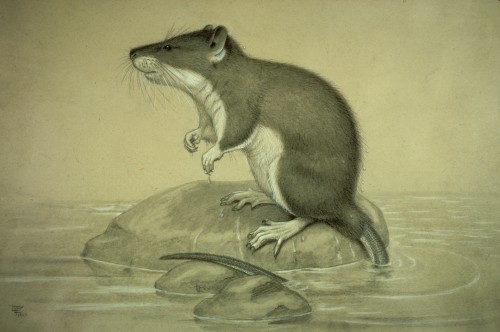This species is known from a single specimen, collected in the 1920s near the source of the Little Abbai at Gojjam in northwestern Ethiopia at an elevation of 2,600 m above sea level, and it may now be extinct. Since then, its habitat has been completely destroyed through overgrazing by livestock. Two attempts to find this unique water mouse have failed, leading researchers to fear that it may already be extinct. The Ethiopian Water Mouse (Nilopegamys plumbeus) is listed as Critically Endangered (B2ab(iii)) on the IUCN Red List of Threatened Species.
How this species is doing
Pressure
The habitat was already severely degraded when the type specimen was collected in the 1920s. There is a possibility that this species is already extinct.
Responses
No conservation measures are underway for this species. Further surveys to determine the conservation status of this species are urgently needed.
Knowledge level
This water-adapted, insectivorous rodent is likely to have occurred at low densities. only from a single specimen, this highly distinctive mouse has more extreme adaptations for swimming than those of any other African murid. These include a large brain, swollen muzzle and extensive vibrissae which may form a sonar system for detecting aquatic invertebrates, reduced and densely furred ears, soft, dense fur for buoyancy, and enlarged hind feet with hairy fringes. Although the feet lack webbing, they are broad enough to be used as paddles for swift, agile swimming.








